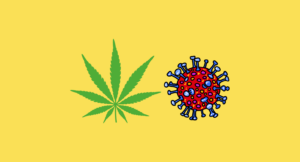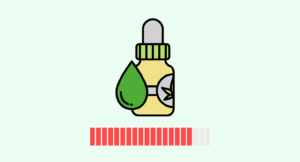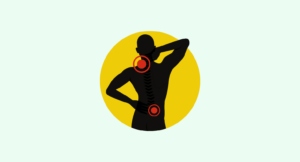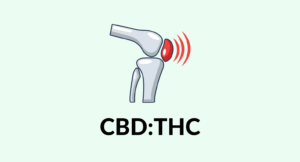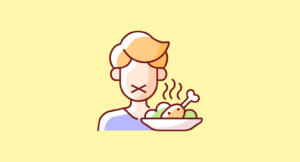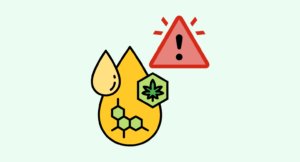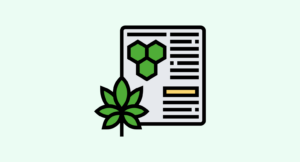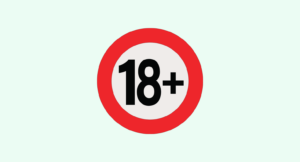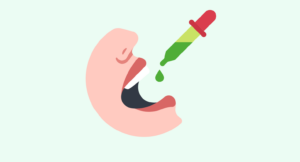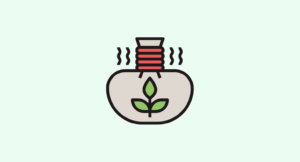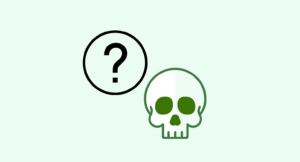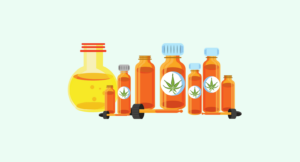
Evidence based
Best CBD Oil & Gummies For Kids: Is CBD Safe for Children with Anxiety & ADHD?
CBD is completely non-psychoactive & non-addictive.
Learn how to use CBD safely with kids & understand what side effects to watch out for.
Many parents are wondering if CBD supplements are safe to give to their children — and what dose to use.
CBD (cannabidiol) is safe to use with your kids — but there are a few factors to be aware of first.
In this article, we’ll cover everything you need to know about using CBD with children.
We’ll cover the laws, safety, reasons why people are using it with their kids, and how to calculate the right dose depending on your child’s age and weight.
Let’s get started.
Best CBD Oil & Gummies for Kids
CBD-infused gummies are the best way to use CBD with children. They provide consistent, precise doses of non-psychoactive CBD disguised in a delicious gummy candy. Aim for gummies that contain either 5 or 10 mg each and cut them into smaller doses as needed.
Just like those gummy vitamins, make sure to only give them what they need and store them out of reach!
CBD oils are also a good option to use with kids, just make sure you use something on the lower end of the potency range (less than 500 mg) and always speak with your doctor first.
Here are the five best CBD gummies to use with kids in 2020:
- Royal CBD — Editor’s Choice
- Gold Bee CBD Gummies — Best Value
- CBD Infusionz Gummy Candies — Widest Selection
- Hemp Bombs CBD Gummies — CBD Isolate-Based
- Green Roads CBD Gummies — Low Doses
Will CBD Make My Child High?
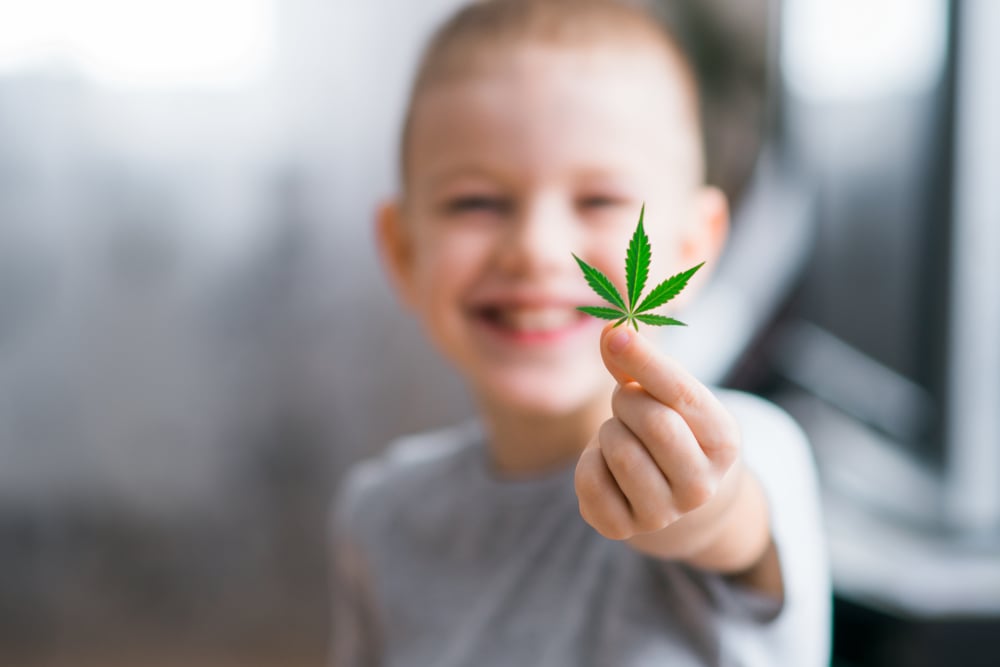
This is the first question most parents ask before deciding to give CBD to their children.
The answer to this question is a resounding no — as long as the THC content of the chosen product is below 0.3%.
THC (tetrahydrocannabinol) is the primary psychoactive constituent of the cannabis plant. This is the compound responsible for the “high” associated with marijuana.
CBD is different — it doesn’t have any psychoactive effects.
Is It Legal to Give CBD to Children?
Recreational cannabis products containing more than 0.3 percent THC are not acceptable for children. In fact, it’s completely illegal to give products high in THC to children.
However, as we’ve discussed, CBD doesn’t have any intoxicating effects. It’s treated as a nutritional supplement in the United States. Most countries around the world consider CBD to the same degree.
Modern extraction techniques allow manufacturers to remove the THC from their final products — allowing them to be given safely and legally to children.
With that said, it’s wise to consult with your child’s doctor before giving them any supplements of any kind.
Suggested Reading: World & Federal Laws on CBD Oil.
When Should I Consider Giving CBD to My Child?
Not all children stand to benefit from CBD — but there are a few examples where CBD may offer dramatic improvements in your child’s quality of life.
The most common reasons parents are using CBD products with their children include:
- To alleviate or prevent nausea before a long car ride (this doesn’t work with all children)
- As an alternative pain management option for mild pain (more severe pain should be treated with the most appropriate options available)
- To alleviate anxiety in anxious or autistic children
- To support a full night of sleep in children experiencing insomnia (nightmares is a common cause)
- To alleviate symptoms of certain epileptic conditions (Dravet’s syndrome)
- To relax the lungs and chest muscles to help with coughing
- To manage inflammation and autoimmune disease
CBD is not a cure-all. While it offers many benefits and has helped a lot of people (kids included), you should never attempt to treat your child with CBD (or any health supplement) without first consulting a doctor. CBD is most effective when combined with other diet and lifestyle modifications.
If your child is having trouble sleeping, is feeling anxious, or experiencing autoimmune disease — it’s important to identify what’s causing the problem and address that directly. CBD may offer support for the symptoms and improve quality of life, but will not solve the problem directly.
The Health Benefits of CBD in Children
Learn about the specific health benefits of CBD for common health problems or symptoms experienced by children of all ages.
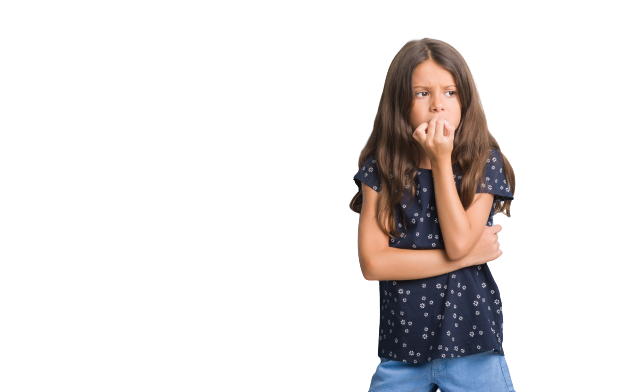
1. CBD Oil For Kids With Anxiety
Children often experience anxiety — whether it’s from nutritional deficiencies, pressures at home or school, or difficulties making friends. It’s normal, and most children manage to get through a rough period without the need for powerful pharmaceutical medications.
However, CBD can be used to address anxiety in the short term. This is especially useful for managing anxiety after, particularly stressful events.
The compound works by increasing the activity of neurotransmitters in the brain tasked with reducing hyperactivity in the nervous system. It helps the mind to relax after a stressful event and return to a more normal baseline.
Check out the best CBD gummies for anxiety here.

2. CBD Oil For Kids With Insomnia
Perhaps the most common reason why parents are giving their children CBD is to manage insomnia.
Overstimulation can cause many children to experience difficulties shutting off at the end of the day. Their brains remain wired for hours in bed after spending so much time in front of computers, phones, or television screens. Children that have difficulty sleeping often become irritable (understandably), which can make it even harder to fall asleep.
CBD is an excellent supplement for supporting sleep. It’s not directly sedating, so you don’t have to worry about most of the negative side effects of tranquilizers. It merely slows hyperactivity in the brain — giving your child the chance to wind down and fall asleep naturally.
Learn more about using CBD for insomnia.

3. CBD Oil For Kids With Epilepsy
One of the main reasons CBD has become so popular in recent years is its ability to treat epilepsy.
This is one of the few health conditions we can actually state “treat” rather than support. This claim is well-supported by clinical research.
The research on the impact of CBD on epilepsy in children began with a series of case studies [5] — starting with a girl named Charlotte Figi.
Charlotte suffers from a rare form of epilepsy known as Dravet’s syndrome. For years, she experienced dozens of debilitating seizures every day. Despite trying everything they could get their hands on, Charlotte’s parents were unable to give their daughter relief — until they decided to try cannabis.
Almost immediately after giving their daughter a high-CBD cannabis extract, she virtually stopped having seizures. She went from having a few hundred per week to just a handful each week. Some days, she didn’t even have one.
Charlotte’s story blew up in the media and has been a major contributor to the popularity of CBD today.
Since then, there’s been a significant amount of research on the use of CBD for epilepsy in both adults and children alike with very promising results [4]. There are even a handful of pharmaceutical companies developing new anti-epileptic medications based around natural or synthetic versions of CBD — such as Sativex® (1:1 THC to CBD) and Epidoliex® (synthetic CBD).

4. CBD Oil For Kids With Autism
Autism spectrum disorder (ASD) is becoming an increasingly common diagnosis in early childhood. At the moment, there’s almost nothing we can do to treat it.
Medications exist, but they’re unreliable and often come with their own set of negative side effects.
In recent years, CBD has caught the attention of medical researchers as a potential treatment for autism.
There is no cure for the disorder. However, there is plenty of room for improvement in managing symptoms — especially side-effects such as anxiety, seizures, mood swings, and a higher potential for addictive behavior. All of these symptoms may be reduced with the use of CBD.
Parents are using CBD oils for symptomatic relief in their autistic children. Some common applications include:
- To reduce social anxiety when visiting in large groups
- To reduce anxiety and occurrence of nightmares
- To alleviate anxiety when visiting the doctor
- For associated health conditions like epilepsy that often appear alongside ASD
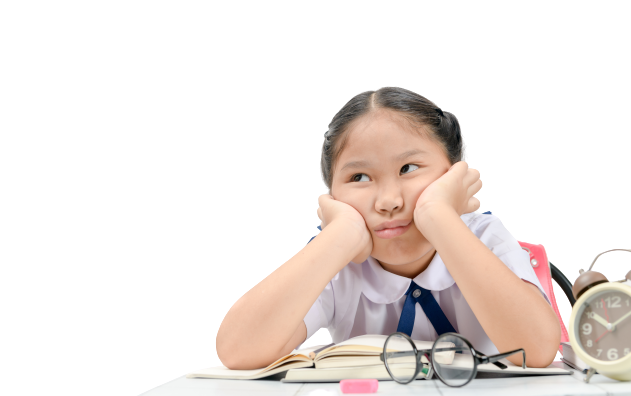
5. CBD Oil For Kids With ADHD
Attention deficit hyperactivity disorder (ADHD) is a common neurological disorder affecting roughly 1 in 15 children in the developed world [1].
Current treatment options are mainly pharmaceuticals. Stimulant drugs, including Adderall and methylphenidate, help with symptoms but often bring their own set of negative side effects. Many parents are seeking natural alternative options instead.
CBD offers a compelling new treatment for ADHD symptoms. One of the key symptoms of ADHD is hyperactivity — something CBD is particularly useful for relieving.
The relaxing nature of CBD helps hyperactive children remain calm and relieves common side effects such as anxiety and insomnia. It’s also useful for addressing headaches and autoimmune conditions that may be associated with the condition.
Learn more about using CBD for ADD and ADHD.
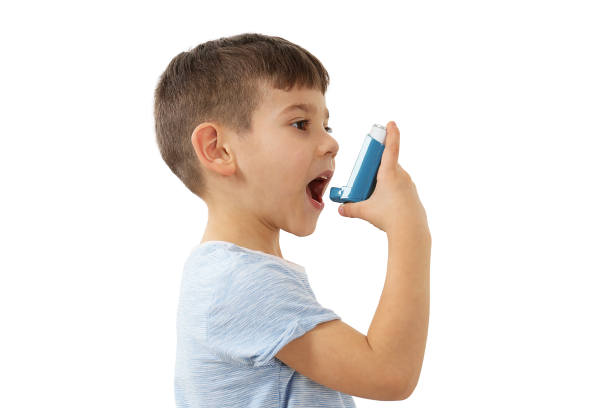
6. CBD Oil For Kids With Asthma
Asthma can range from mild to severe — some asthma attacks can even be life-threatening.
The underlying cause of asthma is inflammation and swelling of the airways. Medications such as salbutamol (puffers) are most commonly used for treating childhood asthma — however, these medications can form tolerance, meaning that the more your child uses it, the less effective it becomes over time. Eventually, you will need to increase the dose or find another medication to relieve symptoms.
CBD is a potent anti-inflammatory compound that acts on several inflammatory pathways leading to asthmatic reactions (such as TNF-a, IL-6, IL-4, and IL-13).
It works best as a preventative for asthma attacks, rather than as a direct treatment. For that, you’re best to stick to the beta-adrenergic agonists inside your child’s puffer.
As a daily supplement, CBD is suggested to resist the specific type of immune activation involved with asthma. It also relaxes the muscles lining the airway and lowers stress levels — both of which heavily contribute to an asthmatic reaction.
Related: Learn more about using CBD for allergic reactions.

7. CBD Oil For Kids With Nausea & Motion Sickness
Children are especially prone to experiencing nausea and motion sickness. There are many reasons for this, but the most common theory is that it’s a direct result of their smaller ear canals. This is also why children are more likely to experience inner or middle ear infections than adults.
Inside our ears is a unique set of nerves designed to relay messages to the brain regarding our association to the ground. This helps us determine up from down and maintain our balance.
If this system becomes dysfunctional — which can happen while sitting in a car for too long or while on unstable surfaces such as a boat — the brain panics and makes us feel nauseous. The brain is essentially tricked into thinking we must have eaten something poisonous, so it tries to get it out of the body by making us vomit.
The region of the brain responsible for producing these effects is aptly named the nausea center in the brain. This system is heavily regulated by the endocannabinoid system [2].
CBD, in turn, interacts closely with the endocannabinoid system by preventing the breakdown of our natural endocannabinoids. This effect is thought to be the reason why CBD is so useful for alleviating nausea.
It’s even been shown to provide relief to cancer patients experiencing extreme bouts of nausea following a chemotherapy session [3].
Learn more about using CBD for motion sickness.

8. CBD Oil For Kids With Skin Conditions
CBD is also useful for addressing skin conditions. Both CBD oil and CBD skincare products are useful for this.
Internally, CBD is useful for supporting underlying causes for skin disorders — often stemming from the gut, liver, immune system, or combination of all three.
Topical CBD products are more useful for managing symptoms or addressing top-level skin problems not caused by other underlying health issues.
A few examples of skin conditions that may benefit from CBD include:
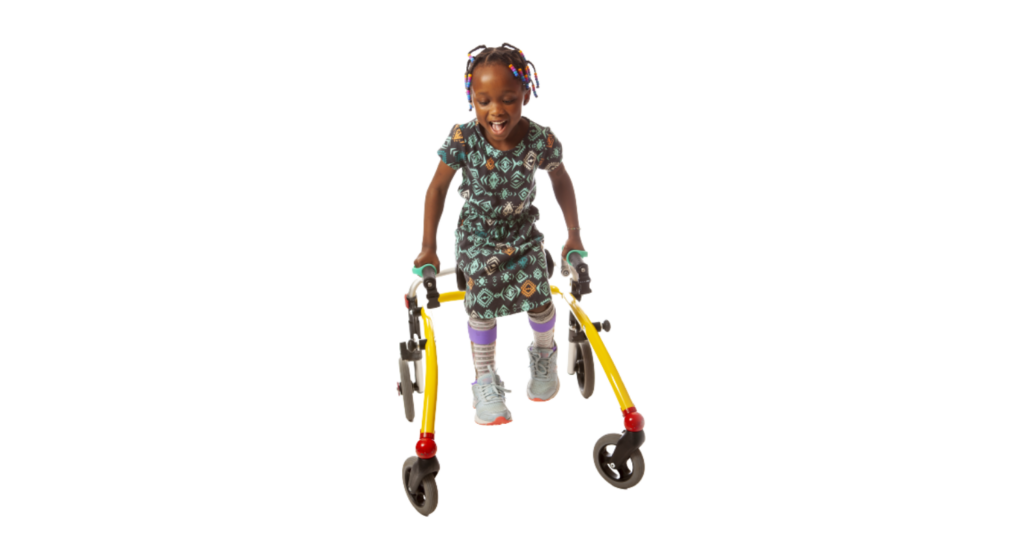
9. CBD For Kids With Cerebral Palsy
Cerebral palsy is the most common childhood motor disability according to the Center For Disease Control (CDC). Most patients with CP (75%) have the spastic form — which causes the muscles to become rigid and stiff.
CBD is not a cure for CP — there is no cure. However, it does have potent muscle-relaxing qualities that may help alleviate some of this tension and make life just a little bit easier and more comfortable for those affected.
Studies examining the effects of CBD and THC was shown to provide a noticeable improvement in muscle rigidity, spasticity, and motor function [6].
Numerous other studies support this conclusion — suggesting CBD serves as an effective ally to conventional treatment approaches. Adverse effects are minimal, primarily consisting of increased somnolescence (rare) and diarrhea.
Never use CBD with children diagnosed with CP before speaking with their pediatrician. There are some drugs used to treat CP that could interact negatively with CBD if it isn’t used properly.
Choosing CBD Products for Children
CBD Comes in many different forms. Most parents will use a simple CBD gummy or a CBD topical — but oils, syrups, and suppositories are also good options.
1. CBD Oils
CBD-infused oils are the most common form of CBD. They’re easy to use, and specific doses can be calculated easily by counting the drops or using a small measuring cup.
Mix CBD oils with your child’s favorite juice or smoothie to disguise the flavor or choose an oil that comes with added flavor.
2. CBD Gummies
CBD gummies are also a great way to give CBD to children. They taste just like candy and can be divided into smaller doses by simply cutting them into pieces. Most people cut their gummies into 5 mg doses for small children, and 10 mg for kids over the age of 10.
Make sure you store these gummies in a safe place where your child can’t reach them between supervised doses.
3. CBD Syrups
CBD syrups aren’t very common but work the same way as CBD oil. The sweet flavor makes it easy to disguise with other foods (such as waffles or pancakes). The only downside is the high sugar content.
Check out our selection of the top CBD Honey Sticks.
4. CBD Topicals
CBD topicals are the best option for anything skin-related. These products don’t need to have the dose measured and are, therefore, the safest means of using CBD. However, it’s still best to try any new skin product on a small area of the body to make sure there are no allergic reactions before using it on larger areas of the body.
5. CBD Suppositories
Suppositories are specifically designed for inflammation in the digestive tract. There are only a few cases where these are necessary, such as following a parasitic infection (for example, worms), to speed recovery and lower inflammation.
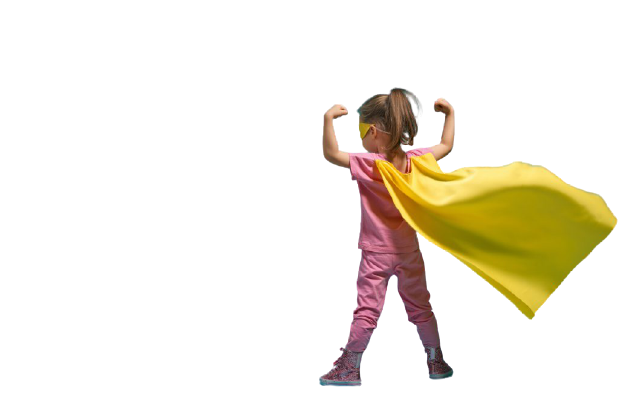
Products to Avoid With Children
Not all forms of CBD are appropriate for children.
Here are a few examples of CBD products to avoid giving children.
1. Tinctures (Alcohol-Based)
Nothing alcohol-related should be given to children. Most tinctures are alcohol-based and should, therefore, be avoided. There are, however, CBD companies referring to their CBD oils as tinctures. Therefore, always double-check the ingredients on products sold as tinctures to confirm the content.
2. CBD Capsules
CBD capsules are a great way to use CBD in general but are not recommended for children. This is especially true for those under the age of 8.
This is because younger children have smaller airways compared with adults. Therefore, it’s much easier for a capsule to get caught in a child’s throat — which can be a very uncomfortable experience, not to mention potentially dangerous.
3. CBD Vape Pens and E-Liquids
Children should not be vaping — end of story. CBD vape pens are an adult-only product.
4. CBD Concentrates
CBD concentrates should be avoided by all but the most experienced CBD users. That even applies to adults.
The ultra-high potency makes it too easy to take too much. For small children who only require very small doses and are more sensitive to compounds (including CBD), this is a recipe for disaster.
Therefore, avoid concentrates and opt for something with a lower potency.

How to Calculate CBD Dosage for Children
In general, the dose of CBD for a child is about 2.5 to 10 mg depending on their age, size, and symptom severity.
Most experts agree CBD is a safe supplement. Going over the recommended dose (within reason) isn’t likely to cause any issues.
Here’s a quick dosage guide to get you in the right ballpark, but if you want to really dial in the dose for your child, follow the instructions listed below.
Quick Reference Chart for Children’s Doses
| Weight (lbs) | Low Strength | Medium Strength |
|---|---|---|
|
30 lbs |
2.6 mg |
7.8 mg |
|
40 lbs |
3.6 mg |
10.8 mg |
|
50 lbs |
4.6 mg |
13.8 mg |
|
75 lbs |
6.4 mg |
19.0 mg |
|
100 lbs |
7.5 mg |
22.5 mg |
(Calculated using Salisbury’s Rule — more on how to do this below)
Here, we’ll go over five steps to determining the right dose to give a child based on the adult doses listed on the packaging.
We’ll even provide a few simple formulas that you can use to calculate a child’s dose for any supplement.
Step 1: Determine the Adult Dose
Children’s doses are most easily calculated from adult doses, so the first step is to get a baseline.
Even in adults, the appropriate dose can vary significantly. The biggest determining factor is the weight and the desired strength.
Some conditions require large doses of CBD to be effective (such as insomnia, severe anxiety, or epilepsy).
Other conditions need lower doses — it will depend on the severity of symptoms.
General Doses Based on Desired Strength (Adults)
- Low strength: 15 mg
- Medium strength: 45 mg
Note: Much higher strengths may be necessary, especially when treating specific medical conditions such as Dravet’s syndrome — however, this should first be discussed with a doctor experienced in giving CBD to children.
CBD is very safe as a supplement within the above dose ranges but can produce unwanted side effects such as oversedation and dizziness in high doses.
Step 2: Use One of These Three Formulas to Calculate the Equivalent Dose for Children
Once you have the adult dose, just do a simple calculation to get your child’s dose.
There are formulas designed to calculate the dose either by age or weight. Some will only work up to a certain age, while others are limited in weight.
There are several different ways to convert the adult dose to a children’s dose, but the one I use is called Ausberger’s rule. Here’s how it works.
Take the weight of your child in kilograms and multiply it by 1.5, then add ten.
The result gives you the percentage of the adult dose to use.
Here’s the formula:
[1.5 x weight in kg] + 10 = percentage of adult dose
Let’s go through an example to make this extra clear:
Let’s say the adult dose you’re aiming for is on the low end — 20 mg per dose. And we’ll use a 30 kg (66 lbs) child as the example. The calculation would look like this: 1.5 x [30 kg] + 10 = 55%
55% of 20 mg is equal to 11 mg — so the equivalent dose for a 30 kg child is 11 mg. This dose can be repeated up to 3 times per day.

Step 3: Determine the Equivalent Dose for the Product You’re Using
Now you know how much CBD to use, all you need to do is compare this to the product you’ve bought or are going to buy.
If you’re using gummies, this step is easy. All you need to do is look at the amount of CBD listed for each gummy. This can range from 5 mg to 50 mg.
So, if your goal is to give 11 mg doses, you could either use one 10 mg gummy, two 5 mg gummies, or half a 20 mg gummy.
For CBD oils and syrups, this step can be tricky because they come in so many different potencies. However, it’s easy to do once you understand how it works.
The key is to find the potency of the oil in mg per mL.
To make your life easy, pick up a 300 mg bottle of CBD oil. This works out to a potency of 10 mg/mL. So for the example above, we simply use 1 mL of oil (or 30 drops).
Here’s a simple chart to show you how these potencies can change:
| Total CBD | 30 mL Bottle (1 oz) | 60 mL Bottle (2 oz) |
| 100 mg | 3.33 mg/mL | 1.6 mg/mL |
| 300 mg | 10 mg/mL | 5 mg/mL |
| 600 mg | 20 mg/mL | 10 mg/mL |
| 1000 mg | 33.3 mg/mL | 16.6 mg/mL |
| 2000 mg | 66.6 mg/mL | 33.3 mg/mL |
| 4000 mg | N/A | 66.6 mg/mL |
Suppositories are different — if giving them to children, find a lower-potency option (30 mg or less per suppository).
What All This Means: How Much CBD Should I Give My Child?
When choosing a CBD oil for children, aim for a low potency (300 mg or 600 mg bottles). This allows you to measure small doses more easily.
Aim for a dose of around 2.5 mg and build up by 2.5 mg every day until you get the effects you’re looking for.
Gummies are an even better option for kids. You can split the dose into smaller amounts by cutting the gummies into pieces.
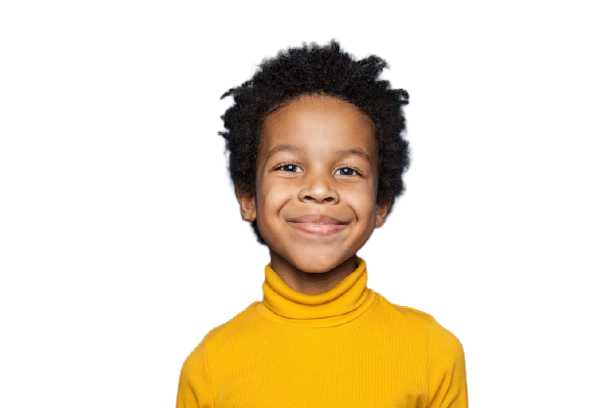
Tips for Giving CBD to Children
1. Use Gummies
CBD gummies are one of the easiest ways to give small children CBD. They taste great and make it easy to provide accurate doses by cutting them in half.
2. Start Low and Go Slow
Always start with a low dose to see how your child reacts. Once you know they don’t react negatively to CBD, you can gradually increase to the desired dose.
3. Use Modified Doses for Children
Make sure you calculate the dose using one of the formulas above instead of using the adult dosage.
4. Apply Small Amounts of Topicals First
If using topicals, make sure you use a very small amount on a healthy region of skin before you apply it to the affected area. Some children, especially sensitive children, may react to the CBD or other elements in the topical.
5. Record Any Changes in Symptoms
Take some notes before giving CBD to your child so that you have a baseline. Then document changes every few days.
Here are some prompts to include:
- What are the symptoms? (Describe them)
- How severe are the symptoms on a scale of 1-10 (10 being the worst)?
- When are the symptoms at their worst? (time of day, before or after food, after using CBD, after meds, etc)
- When are they at their best?
After about a week of using CBD, take these same notes again and compare them. If there are no noticeable changes, continue for at least another week and repeat. If nothing has changed after about a month, CBD may not be the best supplement for your child’s needs.
6. Double-Check the THC Content
Always double-check that the product is THC-free or contains less than 0.3% THC.
Most products currently on the market don’t contain THC. However, this could change as laws around cannabis extracts continue to develop.

Key Takeaways: CBD Supplements for Children
Children, like adults, can benefit from CBD supplementation. However, the necessary dose will be much smaller and needs to be more accurately dispensed — but the effects are the same.
Conditions such as ADHD, asthma, autism, nausea, insomnia, and anxiety are especially problematic for small children.
These are all conditions that may benefit from CBD.
Whenever giving children CBD, it’s important to give them a small dose. Use the formulas above to calculate individual doses. Remember, though, that children grow fast, so you’ll need to recalculate their doses every few months.
We recommend opting for a low-potency CBD oil (300 mg recommended) or opt for CBD-infused gummies.
References
- Zulauf, C. A., Sprich, S. E., Safren, S. A., & Wilens, T. E. (2014). The complicated relationship between attention deficit/hyperactivity disorder and substance use disorders. Current psychiatry reports, 16(3), 436.
- Choukèr, A., Kaufmann, I., Kreth, S., Hauer, D., Feuerecker, M., Thieme, D., … & Schelling, G. (2010). Motion sickness, stress and the endocannabinoid system. PloS one, 5(5), e10752.
- Duran, M., Pérez, E., Abanades, S., Vidal, X., Saura, C., Majem, M., … & Rams, N. (2010). Preliminary efficacy and safety of an oromucosal standardized cannabis extract in chemotherapy‐induced nausea and vomiting. British journal of clinical pharmacology, 70(5), 656-663.
- Crippa, J. A., Crippa, A., Hallak, J. E., Martín-Santos, R., & Zuardi, A. W. (2016). Δ9-THC intoxication by cannabidiol-enriched cannabis extract in two children with refractory epilepsy: full remission after switching to purified cannabidiol. Frontiers in pharmacology, 7, 359.Chicago
- Porter, B. E., & Jacobson, C. (2013). Report of a parent survey of cannabidiol-enriched cannabis use in pediatric treatment-resistant epilepsy. Epilepsy & Behavior, 29(3), 574-577.
- Libzon, S., Schleider, L. B. L., Saban, N., Levit, L., Tamari, Y., Linder, I., … & Blumkin, L. (2018). Medical cannabis for pediatric moderate to severe complex motor disorders. Journal of child neurology, 33(9), 565-571.



